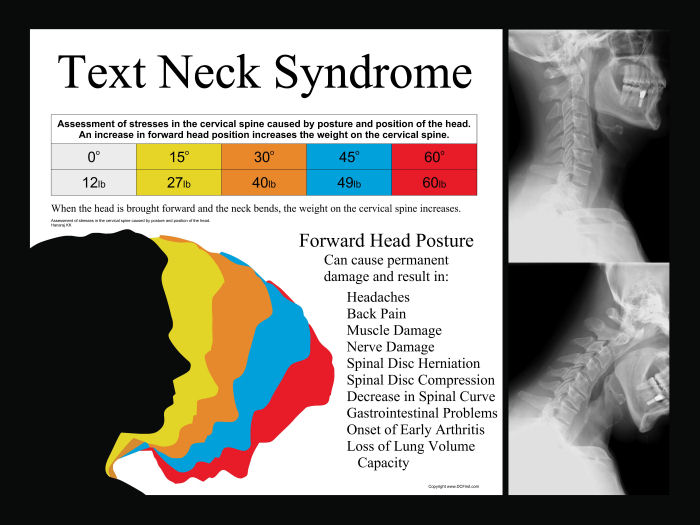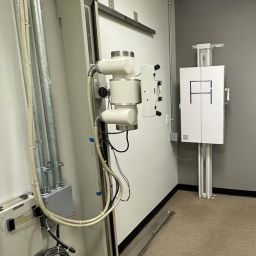
photo courtesy of www.AcupunctureProducts.com
UNDERSTANDING TEXT NECK SYNDROME
Text Neck Syndrome, also known as "Tech Neck," is a term used to describe a set of symptoms and musculoskeletal problems that can occur due to the overuse of smartphones, tablets, and other handheld devices. It is characterized by neck pain, stiffness, and discomfort, often caused by prolonged and frequent tilting of the head downward to look at a screen. This posture places excessive strain on the neck and upper back muscles and can lead to various health issues, including:
- Neck pain: The most common symptom is pain and discomfort in the neck region.
- Shoulder pain: The posture associated with using handheld devices can also lead to shoulder pain and tension.
- Upper back pain: Text Neck Syndrome can cause pain and tightness in the upper back and between the shoulder blades.
- Headaches: Poor posture can contribute to tension headaches.
- Forward head posture: Prolonged use of devices without proper ergonomics can result in a forward head posture, where the head juts forward from the shoulders.
- Reduced mobility: Over time, the neck and upper back can become less flexible.
Preventing Text Neck Syndrome involves maintaining good posture while using handheld devices. This includes holding devices at eye level, taking regular breaks, and performing neck and shoulder stretches to relieve tension. Additionally, strengthening exercises for the neck and upper back can help mitigate the effects of prolonged device use.
It's important to be mindful of your posture when using devices to reduce the risk of developing Text Neck Syndrome and to seek medical attention if you experience persistent pain or discomfort.
Texting can be done safely, helping prevent long-term syndrome symptoms simply by reading your phone at eye-level with proper head position




